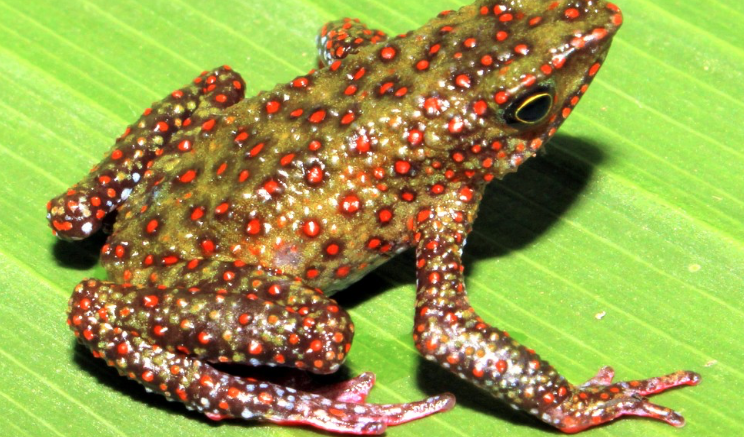Christopher Ramirez / Staff Writer
In the cloudy mountains of Peru, a new frog species known as Harlequin frogs, was discovered by an FIU professor, amid a fight to keep the species from becoming extinct.

Credit: FIU Faculty Directory
Alessandro M. Catenazzi, assistant professor for the Biological Sciences department, was part of the team of scientists who found and documented the new species whose scientific name is moropukaqumir.
Currently, the green frog which is distinctly marked in red spots and is active throughout the day, is classified as a critically endangered species.
It is a rare sight in the valley of Peru.
The small frogs which are nicknamed “clown frogs” for their vibrant colors, live in temperate climates and in highly elevated areas.
“They’re brightly colored, some are entirely yellow, entirely black, green and red,” he said. “These frogs are brightly colored beautiful frogs. I think they’re beautiful and since the 1980s these frogs have continued to die by the thousands”
Catenazzi graduated with a PhD in Ecology with a focus on the conservation of frogs and neotropical amphibians and reptiles.
Hehas traveled the world to research frogs and the vulnerability they face in the wild.
In 2019, he received the Research Award from FIU’s College of Arts, Sciences & Education, for his groundbreaking research on the conservation of frogs.
It was his latest research in Peru, where he got a first-hand look at a fungus disease that has proven to be detrimental for frogs around the world.
Batrachochytrium dendrobatidis, a chytrid fungus which is transferred between frogs, tadpoles, and infected waters, has left 90 different species of frogs extinct.
“It’s hard to get data and notice when frogs start getting sick because not that many people study and follow frogs.”
Professor Alessandro Catenazzi
The fungus attacks the nervous system of the frog by destroying its skis, the most important organ, rendering the frog immobile.
By acting as a poison for the frog, the fungus causes their skin to peel, and sick frogs will become sluggish and lose their appetite until they inevitably die.
The fungus affects both frogs and salamanders.
“There are some salamanders that don’t have lungs at all and rely on their skin, so this disease is a big deal, it kills them,” Catenazzi said.
One might question whether the fungus can affect humans if they are exposed to a frog, salamander, or water that contains it. Catenazzi addressed this concern.
“If you expose human cells to that toxin, it has the same effect. But, the fungus can’t live in temperatures above 32 degrees Celsius and our body is 37 degrees Celsius,” he said.
There is a deficit in research information about this fungus disease, and the demand for this type of research is needed in countries all around the world as this fungus affects all of the tropics including regions Latin America, according to Catenazzi.
There is a striking need for more frog ecologists to better record the amount of frogs in the wild. For this reason, every new species of harlequin frogs that are discovered is a win for scientists
Catenazzi emphasized the need for more researchers studying frog conservation,“people didn’t even know that frogs occurred there, in Peru, as there was a lot of violence with terrorists like Shining Path and tourists so no one was able to go and study the area, but now biologists can finally go back again.”
While the symptoms of a sick frog are clear, Catenazzi highlights how the lack of scientific research on frog conservation slows the process of data collecting.
“It’s hard to get data and notice when frogs start getting sick because not that many people study and follow frogs, not as much as bird disease or mammal disease,” he said.
There are preventive measures that people can take to stop the spread of the chytrid fungus and help save the frog species.
This includes only touching frogs when absolutely necessary, cleaning after oneself, and raising awareness on the possible extinction of frogs by being informed and informing others,
For more information on the effect of the chytrid fungus on harlequin frogs, visit here.






Be the first to comment on "Professor Discovers New Critically Endangered Frog Species"